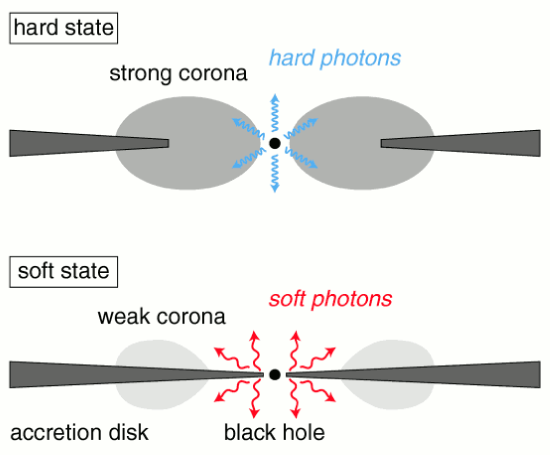Research Gallery > High Energy Astrophysics
Research Gallery
High Energy Astrophysics
| Accretion geometry of disks for LLAGN and high luminosity AGN corresponding to high and low rates of mass accretion respectively. |
|
Image Credit: Ronald Taam

Accretion geometry of disks for LLAGN (upper panel) and high luminosity AGN (lower panel) corresponding to high and low rates of mass accretion respectively. (Liu & Taam 2009, ApJ, 707, 233.)
|
| The evaporation process from the accretion disk leads a flow from the disk to an overlying corona. For accretion rates within the optically thick disk less than a maximal evaporation rate, the disk is completely evaporated and the optically thick disk is truncated. As a result, the inner region is filled with coronal gas, and the accretion takes place via an optically thin, geometrically thick structure. In contrast, the optically thick disk cannot be significantly drained for accretion rates higher than the maximal evaporation rate. Hence, the optically thick disk extends to the innermost stable circular orbit about a black hole, with an overlying accreting coronal flow fed by evaporation. The accretion flow geometry is illustrated as a function of accretion rate in the figure. |
 asiaa.sinica.edu.tw Media Request: epo
asiaa.sinica.edu.tw Media Request: epo asiaa.sinica.edu.tw
asiaa.sinica.edu.tw 
